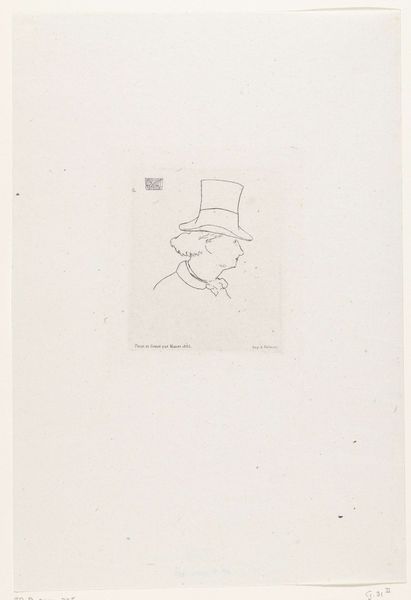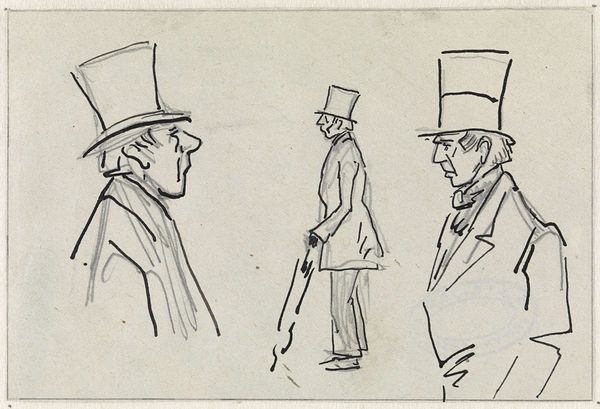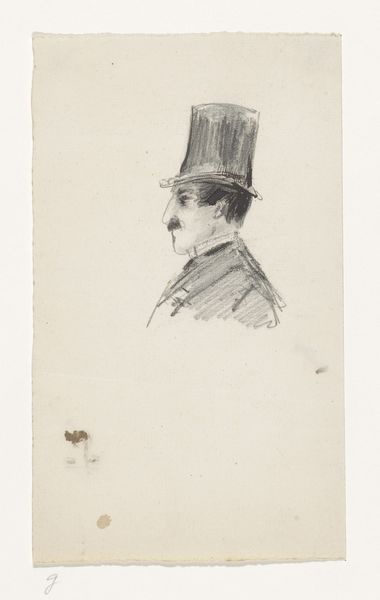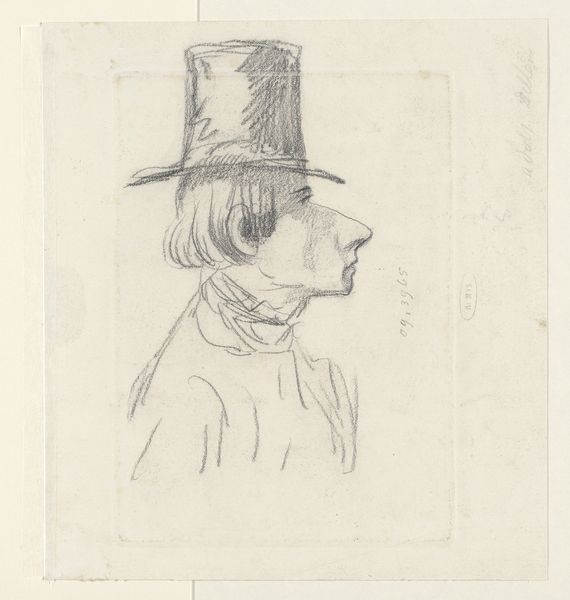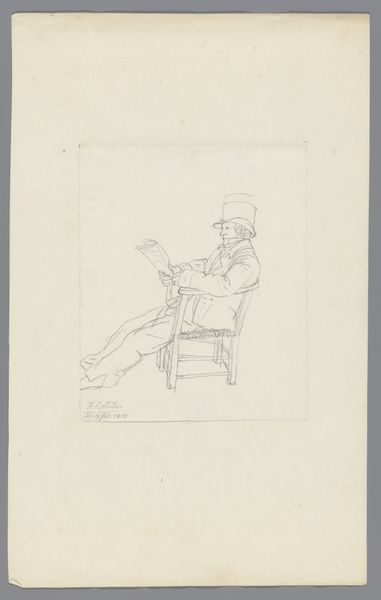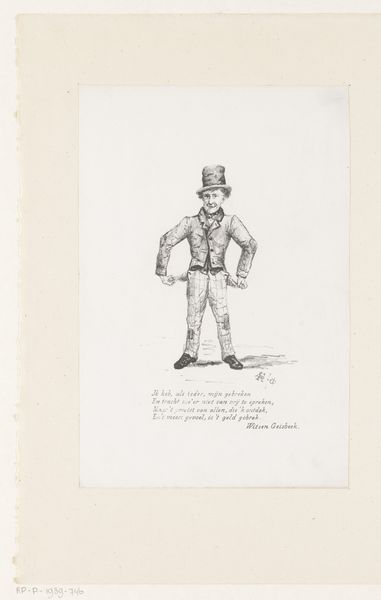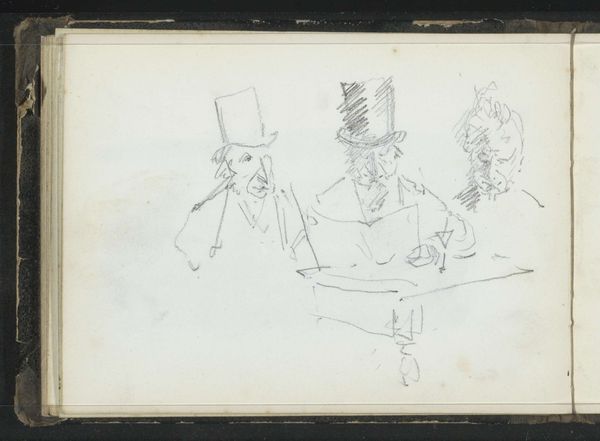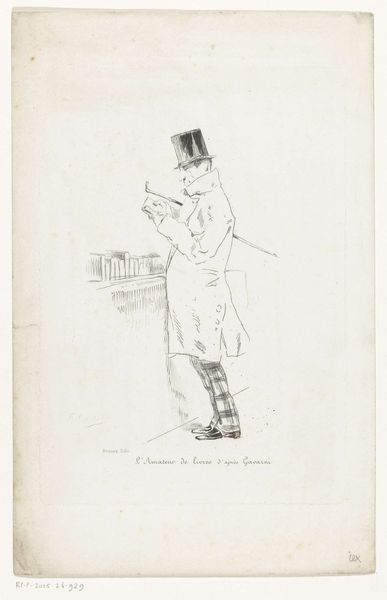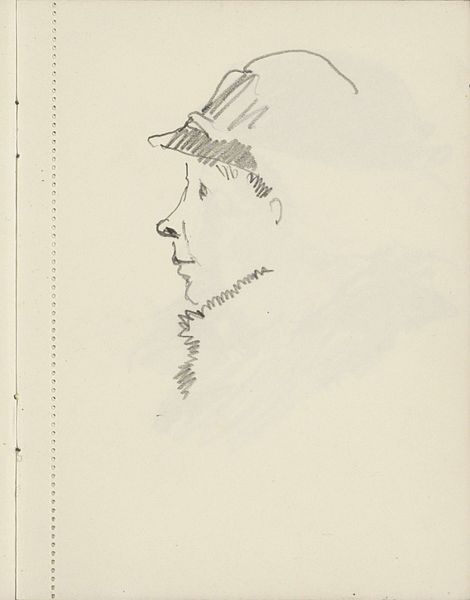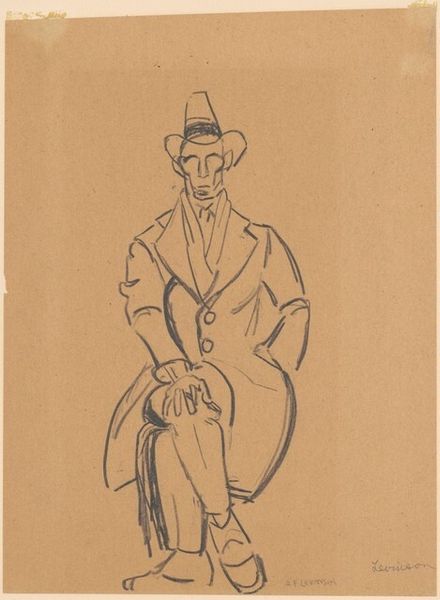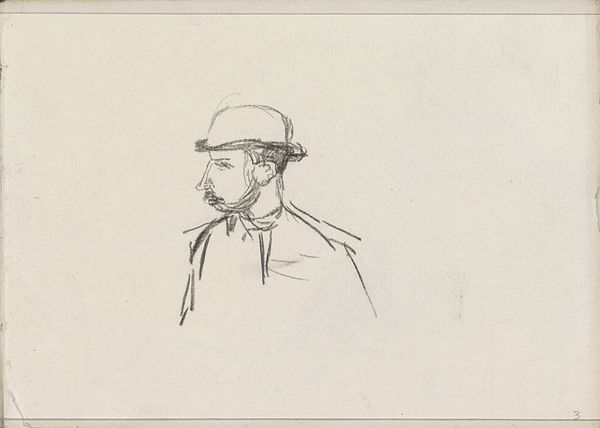
Dimensions: 30 x 20 cm
Copyright: Public domain
Editor: This is Édouard Manet's "Portrait of Charles Baudelaire" from 1862, a pencil drawing that seems to capture Baudelaire in a very fleeting moment, maybe caught mid-thought. It feels simple, yet there's a subtle intensity. How do you interpret this work? Curator: Well, first it's important to acknowledge that the subject himself, Baudelaire, was challenging bourgeois society through his writing and through championing artists that bucked the academic system. This drawing, while seemingly simple, must be contextualized within the dynamic that Manet and Baudelaire occupied: rebelling against the establishment through form and content. How do you see that tension play out in the portrait? Editor: I see the hat, the bow tie... it's very proper. Is Manet subverting those symbols of the establishment? Curator: Perhaps. Consider the gaze – averted, almost melancholic. It disrupts any sense of self-satisfied respectability we might initially associate with the attire. He doesn't meet the viewer’s gaze, suggesting introspection or perhaps even discomfort with societal expectations. Think about how both Manet and Baudelaire used art to question societal norms, even using established methods. Editor: So, Manet employs a seemingly traditional form like portraiture but imbues it with a sense of unease that subtly challenges those very traditions, much like Baudelaire did in his poetry. Curator: Precisely. They're engaging with, but also critiquing, the dominant social structures of their time. Baudelaire’s poetry examined the alienation and anomie of modern urban life; what resonances can you draw out between Baudelaire’s themes and the simple drawing style? Editor: I guess I see how the quick and sparse style speaks to the fragmentation and ephemeral nature of modern experience. Curator: Exactly! It is about questioning and challenging norms through visual language. This piece serves as a starting point for contemplating the intricate web of art, identity, and social commentary. Editor: That's a much deeper understanding than I had initially; seeing it as an intentional reflection of the social issues through Baudelaire. Thanks!
Comments
No comments
Be the first to comment and join the conversation on the ultimate creative platform.
